The Swiss voters are heading to the polls on Sunday to elect their political representatives.
According to the Swiss government, a record number of candidates are running for this year's election, including one in three people who are younger than 30 years old and more than 40 percent female candidates.
Are these variables able to change the conventionally stable balance of power in the Swiss parliament? Here's what you need to know to about the Swiss elections.
How does the parliamentary system work?
All Swiss citizens over the age of 18 have the right to directly vote for the Swiss Federal Assembly every four years.
The parliament is composed of two houses: The National Council, or the lower house, and the Council of States, or the upper house. Both houses hold the same level of power.
The National Council's 200 seats are divided among 26 cantons in proportion to their population so that some least-populous cantons have just one seat in the lower house.
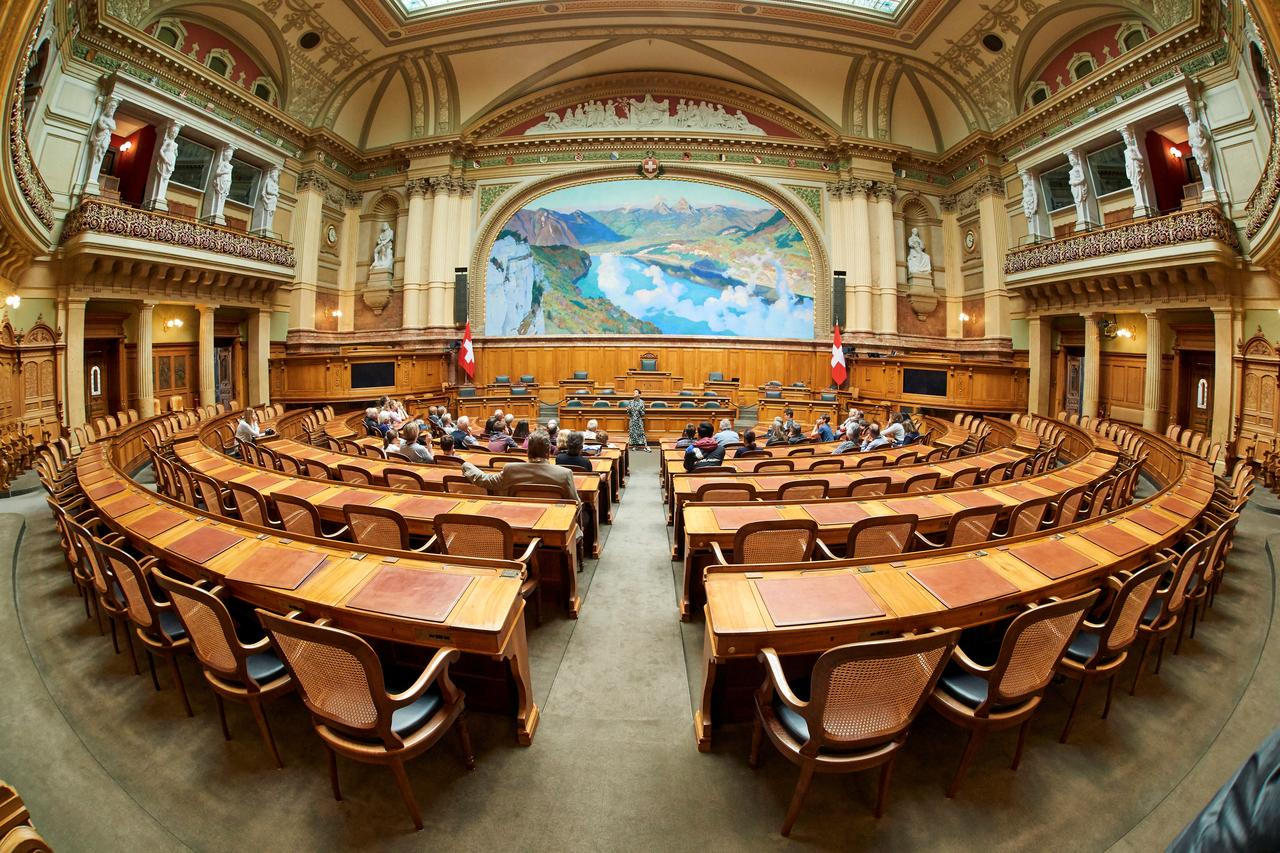
Visitors sit during a visit in the National Council room in the Swiss Parliament Building in Bern, Switzerland, October 16, 2019. /Reuters Photo
Visitors sit during a visit in the National Council room in the Swiss Parliament Building in Bern, Switzerland, October 16, 2019. /Reuters Photo
To balance the interests of the 26 cantons, each canton has two representatives in the upper house regardless of the size of population, except six cantons which are assigned one seat each, for a total of 46 seats.
Only 45 seats in the senator will be voted on Sunday's vote as one of the cantons, Appenzell Innerrhoden, has already voted for its candidate for upper house in April. Depending on the result, some cantons may require a second round or runoff election in November.
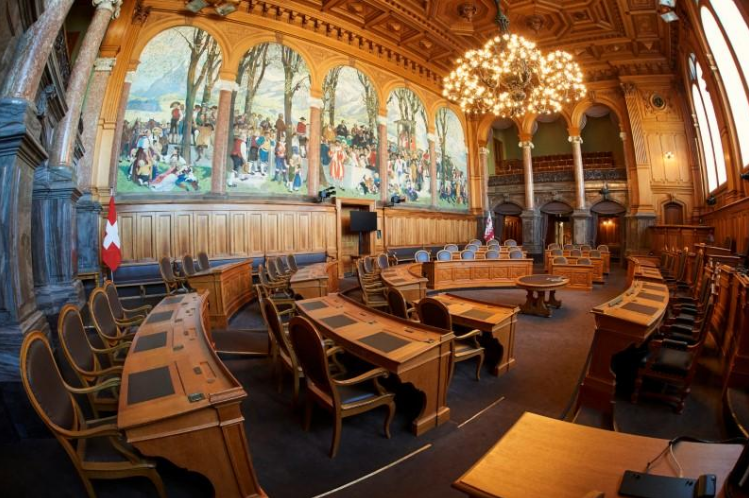
The Council of States room is pictured in the Swiss Parliament Building in Bern, Switzerland, October 16, 2019. /Reuters Photo
The Council of States room is pictured in the Swiss Parliament Building in Bern, Switzerland, October 16, 2019. /Reuters Photo
The Swiss parliament has for a long time remained stable with the country's four major parties: the Radical Democratic Party (center-right), Christian Democrats (center to center-right), People's Party (conservative right), and Social Democrats (center-left) holding the majority of the National Council's seats.
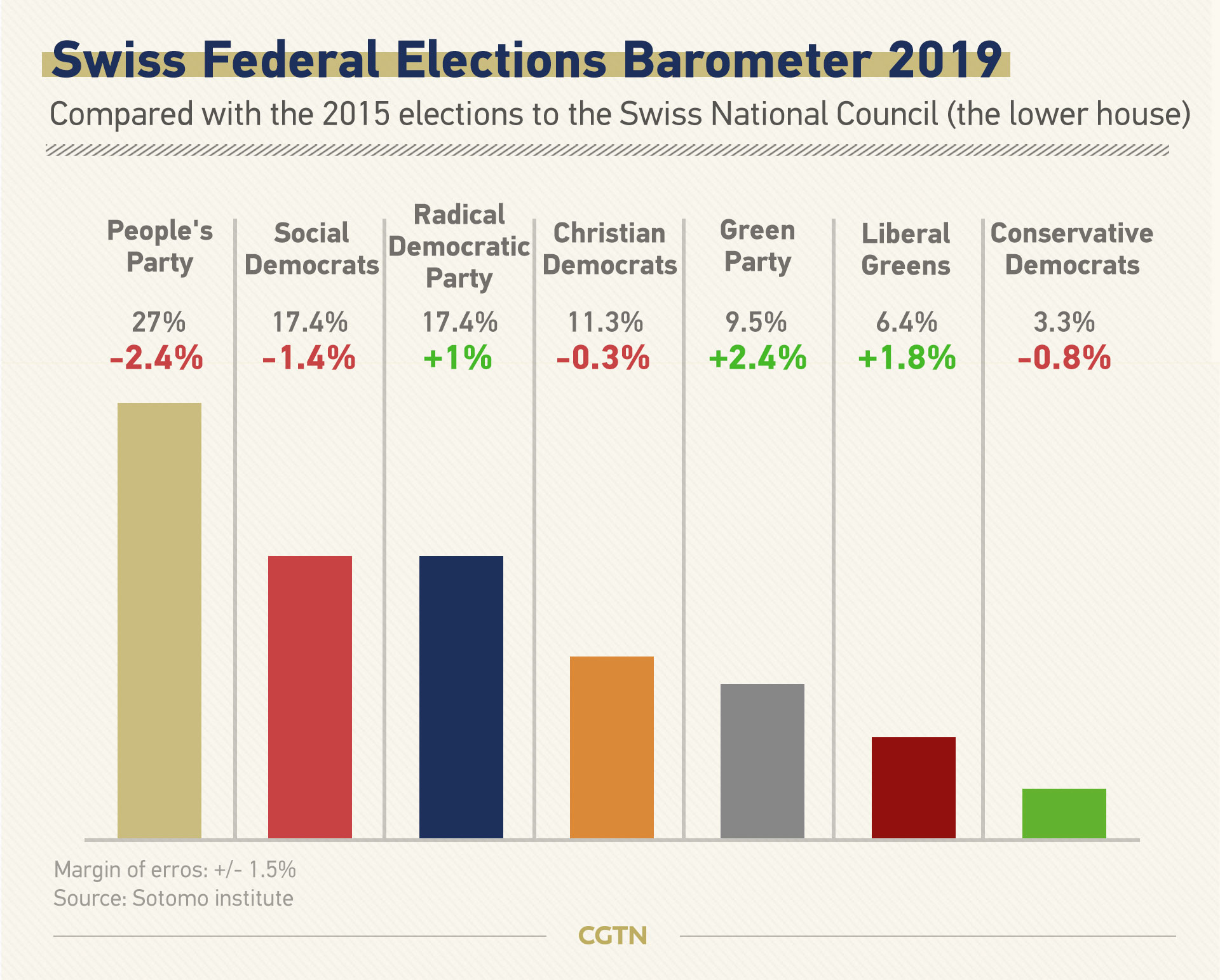
A poll run by Sotomo research institute indicated that even though the People's Party and Social Democrats are still taking the lead in lower house race, the Green Party as well as the Liberal Greens look set to make the biggest gains compared to the 2015 elections.
The poll gives the People's Party a 10-percentage-point lead than the second-ranked left wing Social Democrats. However, the People's Party has weakened by 2.4 percent comparing to the last election. Only Radicals won additional ground among the top four major parties.
Overall, parties to the right (aggregated People's Party and Radicals) have weakened by 1.4 percent, while the left (Social Democrats and Green together) won 1 percent.
According to the poll, the center parties (Christian Democrats, Liberal Greens and Conservative Democrats) won 0.7 percent, showing they may also win some ground.
Analysis said although the polls suggest the relatively stable political make-up of Swiss parliament is unlikely to be overturned, the People's Party and Radical Liberals may lose their majority and the parliament could slide a little towards the left.
Will female candidates become game-changers?
Strikingly, the female candidates' percentage for the first time exceeded over 40 percent this year, bringing a greater possibility for women to increase their representation in Swiss politics.

In June, women across Switzerland launched a historic female strike addressing unequal treatment and conditions compared with their male counterparts, marking a vital step in the fight for equal gender rights.
A primary change in the 2019 elections is that all parties, except for the Conservative Democratic Party, put more women on the top of their electoral lists, giving them better chances to be elected.
However, experts noted in a country where female voters outnumber males by 10 percent, Swiss women have a long way to go.
At present, the number of women in Swiss parliaments remained low as female representatives only make up 32 percent in the lower house, 15 percent in the senatorial and 30 percent in the cantonal parliaments.
Thus, the percentages of female candidates are diverse from party to party and canton to canton.
The data from voting monitor Smartvote showed that Greens have the highest number of female candidates at 56 percent, while for the People's Party, the number is only 22 percent. And for a canton like Schwyz, the female candidates' participation rate is still lower than 30 percent.
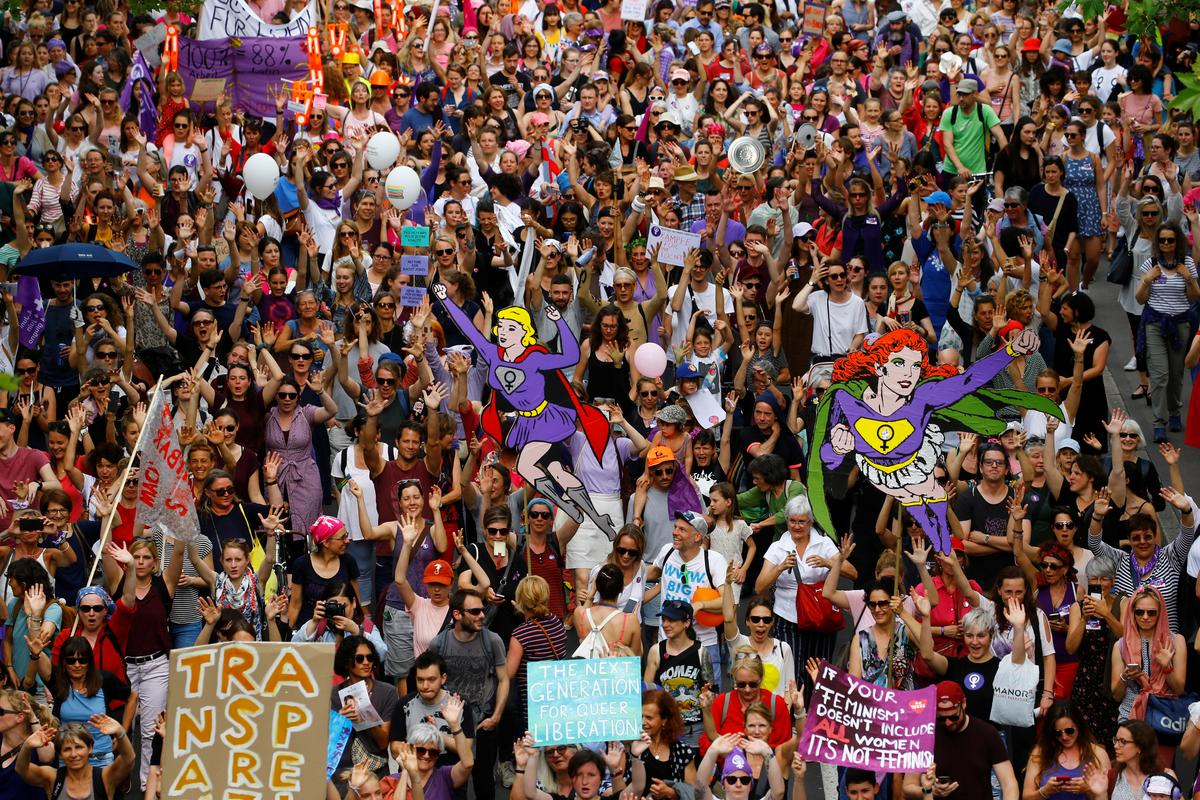
Protesters carry banners and placards at a demonstration during a women's strike in Zurich, Switzerland, June 14, 2019. /VCG Photo
Protesters carry banners and placards at a demonstration during a women's strike in Zurich, Switzerland, June 14, 2019. /VCG Photo
According to Sotomo, relations with the EU and climate change are at the top of voter concerns.
Around 47 percent voters in the survey said they will consider Switzerland's bilateral ties with the EU first when choosing a party to support and 38 percent are mobilized by climate change issues when voting.
Switzerland is currently wrestling with its biggest trading partner EU on a new treaty. The negotiation is in logjam now waiting for Swiss election results and new EU commission leaders headed by Germany's Ursula von der Leyen who will take office next month to make progress.
The climate issue is, not surprisingly, high on the agenda as climate strikes have been taken place all year in the country. A record 100,000 people joined the September rally in the Swiss capital calling for actions addressing the issue.
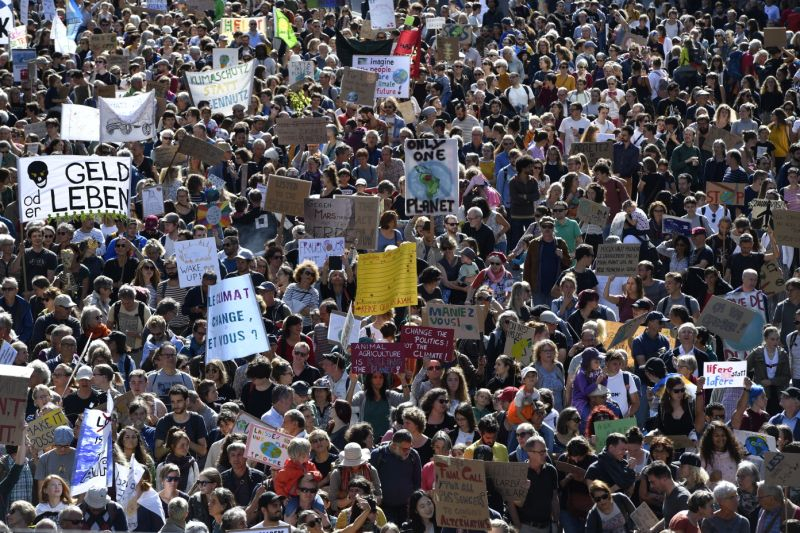
People attend a "National Climate Strike" demonstration in Bern, Switzerland, September 28, 2019. /AP Photo
People attend a "National Climate Strike" demonstration in Bern, Switzerland, September 28, 2019. /AP Photo
These protests not only resulted in more support for green parties as polls indicated, but also encouraged more young people to have their voices heard and get their first taste in political participation.
(Cover: Workers hang up a Swiss flag on the Swiss parliament building in Bern, Switzerland, November 24, 2015. /Reuters Photo)